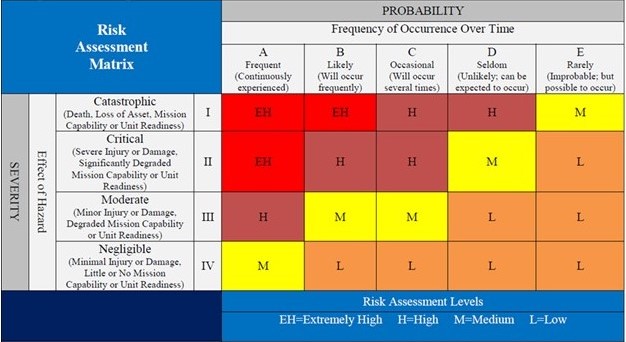The Mission Sustainment Program supports the DAF in identifying and assessing hazards that include actual or potential conditions that degrade, or potentially degrade, military testing, training, or other operational capabilities. Hazards can occur within or outside the installation and include the following categories: Airspace, Climate/Weather, Energy, Land/Sea, Natural/Cultural Resources, Spectrum, and Water. The figure above shows the risk management process.

Hazards
The Mission Sustainment Program addresses several hazard areas, defined below. The DAF works with diverse stakeholders to address current or potential hazards that extends beyond the fenceline. Example hazards and controls can be found in AFI 90-2001.
Airspace: Vertical obstructions, airspace congestion, bird/wildlife aircraft strike, unauthorized airspace access, and light interference.
Land/Sea: Incompatible development around airfield/installation boundaries, airborne noise, incompatible development near remote facilities, impacts to installation ingress/egress.
Spectrum: Physical interference with spectrum utilization, reduced in-band utilization, or degradation from adjacent band activity.
Water: Impeded installation water supply or quality, changes in water access rights, reduced back-up water supply.
Energy: Insufficient energy supply for DAF assets, unsustainable energy stores, reduced reliability of energy supply or infrastructure.
Climate/Weather: Susceptibility to drought, flooding, wildland fires, ecosystem disruption, severe weather, or change in disease vectors.
Natural/Cultural Resources: Loss or destruction of natural/cultural resources, pollution/contamination or hazardous material management practices that result in operational changes.
Risk Management
The DAF uses a Risk Assessment Matrix, established in AFI 90-802, Risk Management to calculate the severity (impact) and probability (frequency) of identified hazards. This framework supports the DAF’s analysis of hazards and how to address any impacts to the military inside and outside the fenceline.
